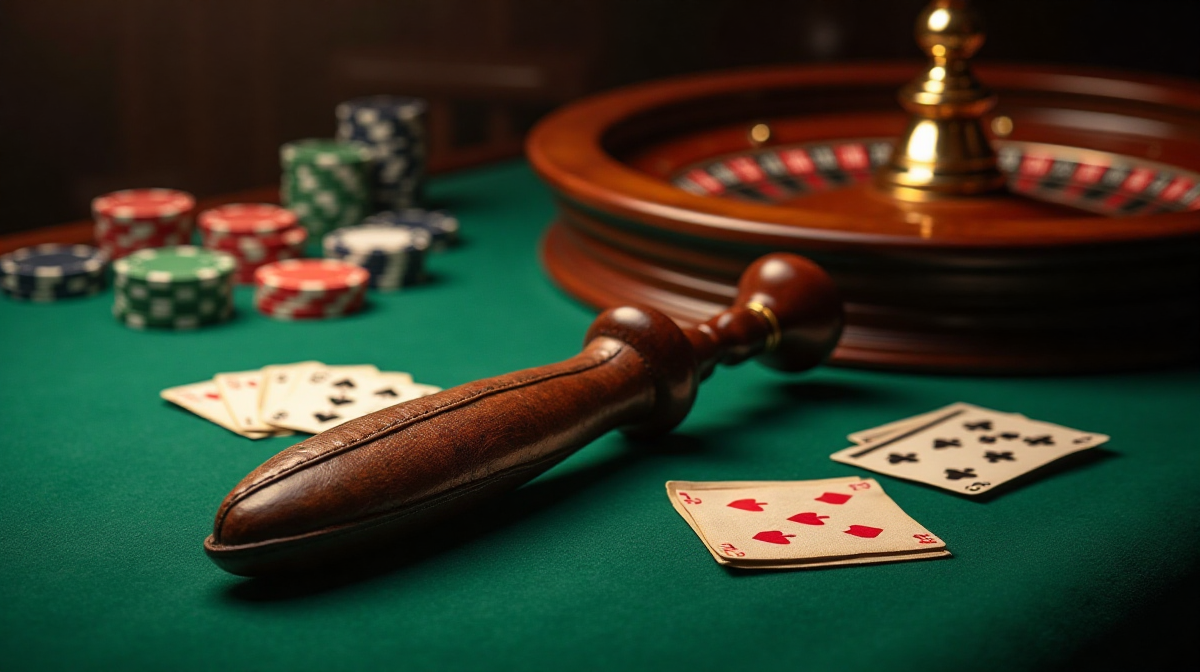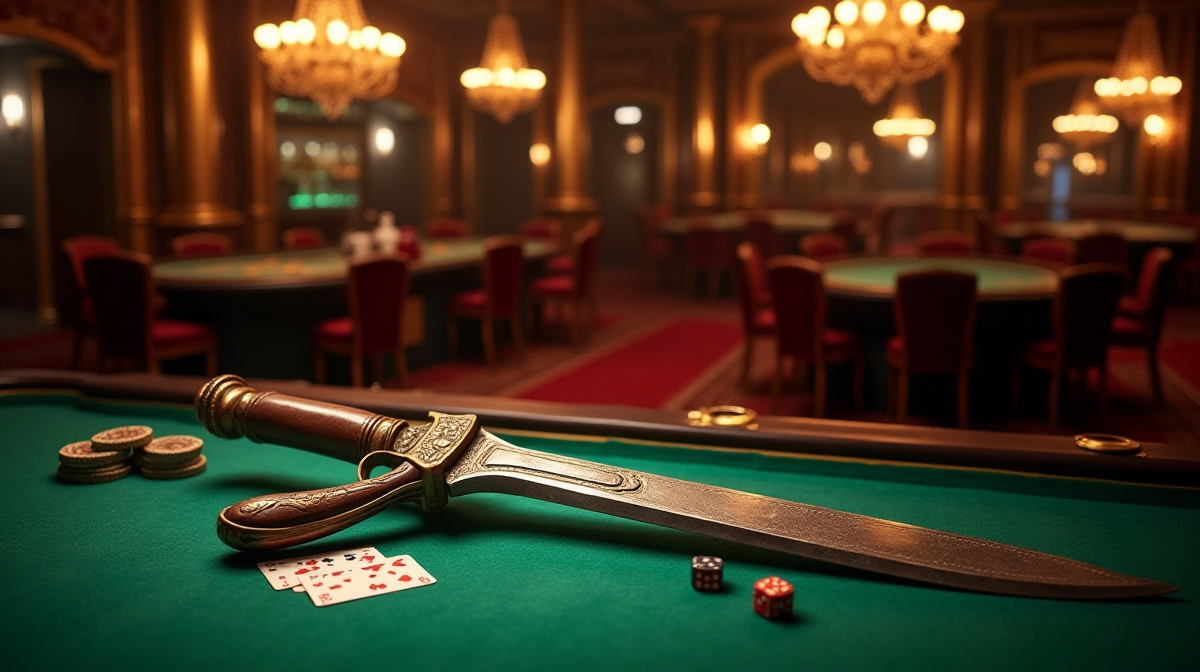Blackjack Weapon: Beyond the Casino?
The blackjack, often associated with casinos and card games, surprisingly possesses a history extending far beyond the felt table. While images of high-stakes gamblers and the game of blackjack weapon might come to mind, this seemingly innocuous tool has a complex and often misunderstood relationship with self-defense. This article delves into the history, mechanics, legality, and practical considerations of the blackjack, exploring its potential – and limitations – as a self-defense tool. Alongside this discussion, we’ll touch on alternative entertainment options like online casinos, specifically mentioning platforms like “22 bet” and the convenience of the bet 22 app.
From Card Game to Close-Quarters Combat: A Brief History
The blackjack's origins trace back to the Middle Ages, where it was employed as a simple, concealable weapon. Historically, it was favored by law enforcement and individuals needing a discreet means of self-protection. Its effectiveness stemmed from its ability to deliver a concentrated impact with minimal training. Over time, it faded from common use, largely replaced by firearms and other modern self-defense tools. However, its simplicity and concealability continue to attract interest from those seeking a non-lethal option. And, for those who enjoy a different kind of risk and reward, platforms like 22 bet offer a readily accessible and legal alternative.
Dispelling Myths: Legality and Perception of Blackjacks Today
Today, the perception of the blackjack is heavily influenced by its association with criminal activity in past eras. Legally, its status varies dramatically by location. Many jurisdictions restrict or outright prohibit possession, classifying it as a prohibited weapon. Understanding these local laws is paramount. The availability of the download 22 bet app provides a legal alternative for those seeking excitement, without the legal complexities of owning a restricted weapon.
Why the Interest in Blackjacks as Self-Defense Tools is Growing
Despite the legal hurdles, interest in blackjacks as self-defense tools is experiencing a resurgence. This is driven, in part, by a desire for simple, non-lethal options and a growing distrust of relying solely on firearms. The perceived ease of use and concealability contribute to its appeal. Furthermore, the rising popularity of self-defense training and awareness has prompted individuals to explore a wider range of tools and techniques. For those who prefer a different type of strategic challenge, parimatch blackjack offers an engaging alternative within a regulated environment.
Defining the Blackjack: Types, Materials, and Construction
A blackjack fundamentally consists of a weighted impact tool, typically featuring a handle and a weighted head. Common materials include leather, rubber, and flexible or rigid cores. Leather-covered blackjacks offer a classic look and feel, while rubber versions provide better grip and can be less intimidating. The weight and flexibility of the blackjack significantly impact its effectiveness. Heavier blackjacks deliver more force but are harder to control, while lighter versions prioritize speed and maneuverability.
The Physics of Impact: Force, Weight, and Grip Considerations
The effectiveness of a blackjack relies on the principles of physics. Force is generated by combining weight and velocity. A proper grip is crucial for controlling the swing and maximizing impact. The weight distribution within the blackjack also plays a role, influencing its balance and swing characteristics. Understanding these factors is essential for utilizing the tool effectively.
Advantages Over Other Impact Weapons
Compared to other impact weapons like flashlights or pens, the blackjack offers advantages in concealment, ease of use, and potential stopping power. Its design is specifically intended for delivering a concentrated impact, unlike improvised weapons. The bet 22 app offers a similar sense of calculated risk, but within the bounds of legal entertainment.
Proper Grip and Stance: Maximizing Power and Control
A firm, secure grip is fundamental. The stance should be balanced and allow for a full range of motion. Weight transfer is essential, utilizing the body's momentum to generate power. Proper technique minimizes the risk of injury to the user and maximizes the impact on the target.
Target Areas: Strategic Points for Maximum Effect
Strategic targeting is crucial. Arms, legs, and the torso (with significant legal caveats) are potential targets. However, it's vital to understand the legal implications of targeting specific body parts. A blow to the head, for example, could result in severe legal consequences.
Swing Variations: Straight Strikes, Hooks, and Follow-Through Techniques
Different swing variations are suited for different situations. Straight strikes deliver direct force, while hooks can be used to target vulnerable areas. Proper follow-through ensures maximum energy transfer.
Disarming Techniques for Common Weapons
While avoiding confrontation is always the best option, knowing how to create space and potentially disarm an attacker is valuable. Focus on disrupting the attacker’s balance and creating distance, rather than attempting a direct confrontation.
State-by-State Legality: A Detailed Overview
The legal status of blackjacks varies significantly. Some states classify them as illegal weapons, while others restrict their possession or require permits. It’s crucial to research and understand the laws in your specific location. The 22 bet platform, on the other hand, operates within a clearly defined legal framework.

Defining “Self-Defense”: When is the Use of a Blackjack Justifiable?
Self-defense laws vary by jurisdiction. Generally, the use of force must be reasonable and proportionate to the threat. The “Castle Doctrine” and “Stand Your Ground” laws offer varying levels of protection to individuals defending themselves.
Potential Criminal Charges: Assault, Aggravated Assault, Weapon Possession
Using a blackjack illegally can result in serious criminal charges, including assault, aggravated assault, and weapon possession. The severity of the charges depends on the circumstances and the specific laws of the jurisdiction.
Legal Alternatives for Self-Defense
Pepper spray, tactical pens, and personal alarms are legal alternatives for self-defense in many areas. These options offer varying levels of protection and have different legal implications.
Blackjack vs. Pepper Spray: Range, Effectiveness, and Legal Concerns
Pepper spray offers range and non-lethal incapacitation, but can be affected by wind and may not be effective against all individuals. Blackjacks require closer proximity but deliver a more immediate impact. Legal concerns differ, with pepper spray generally being more widely permissible.
Blackjack vs. Tactical Pens: Impact, Concealment, and Training
Tactical pens offer concealability and can deliver a focused impact, but their effectiveness is limited compared to a dedicated blackjack. Both require training to use effectively.

Blackjack vs. Firearm: Training, Responsibility, and Legal Repercussions
Firearms require extensive training, carry significant responsibility, and have stringent legal regulations. Blackjacks are simpler to use but offer less stopping power and carry their own legal risks.
Blackjack vs. Empty Hand Self-Defense: Enhancing existing skills, minimizing reliance.
A blackjack can enhance existing self-defense skills, providing a tool to amplify force. However, it should not be seen as a replacement for proper empty-hand training.
Finding Qualified Instruction
Professional training is essential before attempting to use a blackjack for self-defense. Qualified instructors can teach proper techniques, safety protocols, and legal considerations.
Practice Drills: Solo and Partner Exercises for Skill Development
Regular practice is crucial for developing proficiency. Solo drills can improve technique, while partner exercises can simulate real-world scenarios.
Safety Protocols: Responsible Handling and Storage
Safe handling and storage are paramount. The blackjack should be stored securely, out of reach of children and unauthorized individuals.
The Importance of De-escalation: Avoiding Confrontation Whenever Possible.
De-escalation should always be the primary goal. Avoid confrontation whenever possible and prioritize personal safety.
Weighted Blackjacks: Benefits and Risks
Weighted blackjacks deliver more force but require greater skill and control. They also carry increased legal risks.
Customization and Maintenance: Extending the Life of Your Blackjack
Regular maintenance, such as cleaning and lubricating the leather, can extend the life of the blackjack. Customization options, such as handle wraps, can improve grip and comfort.
Combining Blackjack Techniques with Other Self-Defense Systems.
Integrating blackjack techniques with other self-defense systems, such as martial arts, can create a more versatile skillset.
The Blackjack as a Tool, Not a Guarantee of Safety
The blackjack is a tool, not a guarantee of safety. It should be used only as a last resort, and its effectiveness depends on proper training, technique, and situational awareness. Like placing a bet on 22 bet, it involves risk and requires informed decision-making.
Prioritizing Situational Awareness and De-escalation
Situational awareness and de-escalation are the most effective self-defense strategies. Avoid dangerous situations whenever possible and prioritize personal safety.
Final Thoughts: Making an Informed Decision
Choosing to carry a blackjack for self-defense is a serious decision with significant legal and ethical implications. Carefully consider the risks and benefits, and ensure you are fully informed and properly trained.

